Did dinosaurs lactate..?
The fossil record is brutally frustrating; it mostly preserves only vestiges of deaths long past as body fossils, with occasional glimpses of life being gleaned from their surroundings and any trace fossils, or activity fossils that we might find. One question palaeontologists have long been seeking the answer for is how good were dinosaurs as parents? Modern birds are descended from dinosaurs, and are pretty awesome parents in their nesting, brooding, and raising of their chicks from birth until they can quite literally fly the nest. But birds are the only extant group of dinosaurs out of three major lineages.
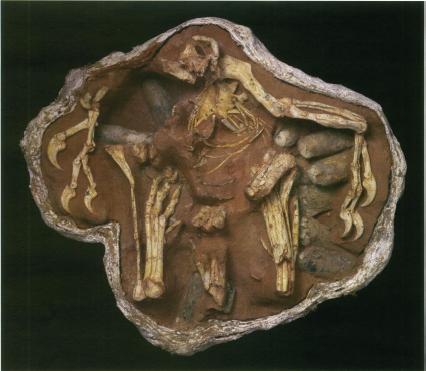
Early on in dinosaur evolution, the line diverged into two major subgroups: ornithischians, with a characteristic ‘bird-hipped’ pelvic configuration, and saurischians, with a ‘lizard-hipped’ configuration. The latter lineage diverged later into sauropodomorphs, the beasties which grew to gargantuan sizes and were living 50 tonne lawnmowers, and theropods, the mostly carnivorous critters which gave birth to modern birds eventually. It is from the association of modern birds as theropods that we can extrapolate back through evolutionary history to try and figure out how these dinosaurs were as parents, and using fossils to reciprocally shed light on the early evolution of these habits (e.g., through the development of feathers). But what about the two herbivorous lineages?
Both sauropodomorphs and ornithischians are thought to have moved in herds, perhaps even consisting of multiple species, which is actually an effective method of protecting younger members of the flock until juveniles were big or armoured enough to fend for themselves or begin raising their own offspring or clan. Many ornithopod dinosaurs, one of the 5 major sublineages within Ornithischia*) are thought to have exhibited extensive parental care from the hatchling through to the juvenile stages of growth (Tenontosaurus and Maiasaura both are great examples of this). This probably suggests that parental care was plesiomorphic, or an early-evolved trait, for all dinosaurs, the results of which we still see today in our gardens and forests.
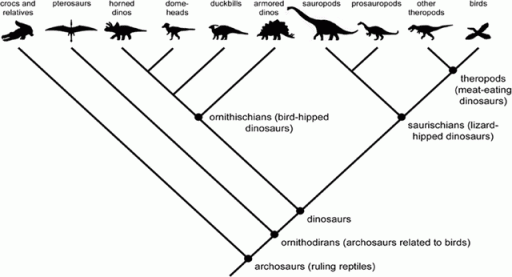
Herding and social monitoring of this manner though is but one aspect of parental care. A new study by Paul Else of the University of Wollongong (awesome), Australia, has posed a new speculative hypothesis, that dinosaurs may have actually ‘lactated’, analogous to mammals and modern birds/dinosaurs, as a method of increasing the growth rate of their offspring. Lactation, strictly defined, refers to the process associated with the mammary glands in mammals. However, birds also are able to perform a similar action to lactating. For example, pigeons and doves (members of the Family Columbidae) ‘lactate’ via their crop organ (part of the oesophagus); flamingos and emperor penguins do it through their oesophageal lining; and seabirds such as albatrosses do it via their proventriculus – these all produce a nutrient-rich oil or milk-like substance that they feed to their offspring to enhance growth and immune system development. These substances vary quite a bit in composition and consistency, and are fed to respective chicks either directly from the oral cavity, or in the case of flamingos in a drip-fashion. The way in which these are produced, the composition (e.g., lack of carbohydrates in bird ‘milk’), and the length of time fed to their young also differs from the typical mammalian mode of lactation.
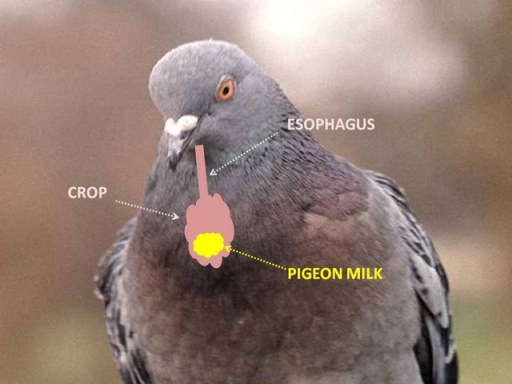
Let’s talk about hormones. Prolactin is an important hormone, effecting the immune system, metabolism, growth and development (maybe the EU economy could do with some prolactin), and parenting behaviours. It is also associated with lactation in both mammals and birds, promoting the development of mammary glands and milk in the former and the ‘lactation’ process in the latter, as well as helping out with regurgitating in pigeons (just when you thought they couldn’t get any cuter..). Birds and crocodiles are both extant groups of archosaurs, a major group of reptiles that included the extinct dinosaurs too (dinosaurs are considered bird-line archosaurs). The genetic sequences of prolactin between birds and crocodiles are about 90% similar, which is pretty damn high seeing as the two groups split some 250 million odd years ago, and strongly suggests that this hormone was present in all extinct dinosaurs. If so, this implies that it was present to support ‘lactation’ and parental behaviours in dinosaurs!
The big problem with trying to figure out if ancient or extinct groups lactated is that it’s a pretty difficult thing to preserve, due to the pervasive bias against ‘soft-part’ preservation we find in the fossil record. What evidence is there then that might support the idea that dinosaurs lactated during periods of parental care? In terms of actual fossil evidence, the only reports of crops (soft tissue) being preserved come from two exquisitely preserved early bird species from the Early Cretaceous, implying that they were present in at least one lineage of theropod dinosaurs. This does not suggest that they were present in other theropod or dinosaurian lineages. However, dinosaurs undoubtedly had oesophageouses, you know, to breathe, so had the potential at least to develop the required structures to produce secretions analogous to ‘lactating’ birds. Being scaled too, all non-avian dinosaurs would not be able to secrete through the ‘typical’ epidermal glandular lactation (as in mammals), so would have had to resort to such gastric, crop or oesophageal structures.
In the theropod lineage of dinosaurs, many avian behavioural activities have been suggested in the past decade or so, including nest construction, grouped nesting sites, brooding (Oviraptor, infamously named for being an ‘egg-thief’, has been reconsidered to have been protecting the nest it was supposedly raiding in a brooding position when preserved), egg guarding, and feeding of offspring. This is somewhat different to modern reptiles, which often lay their eggs and then disappear leaving the hatchlings to fend and feed themselves. The natural progression from this extensive care system though, as in modern birds, is lactation. As most avian theropods during the Mesozoic were still dominantly carnivorous, this would probably be best for offspring to save them from having to eat nasty bits of regurgitated lizard of whatever tasty morsels happened to be on the menu.
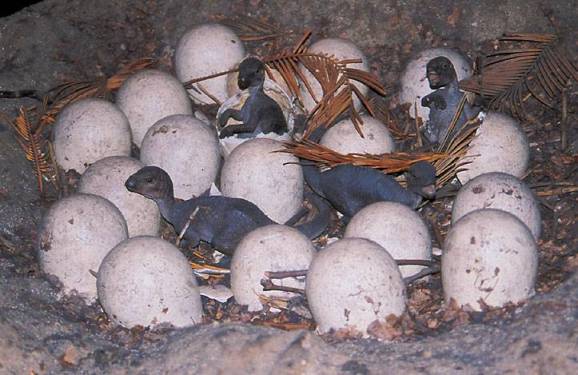
In some dinosaurs, such as Maiasaura, it has been found that growth rates are fastest in the early stages of ontogeny (growth), around the hatchling stage. This is determined mostly by chopping open the limb bones of the dinosaurs, and looking for things such as relative bone densities and growth rings, somewhat similar to that which we find in trees. These tell us about relative growth rates in different stages of the growth phase. It is possible that these early accelerated growth rates may have been aided by supplementary nutrition from milk-like secretions, analogous to that seen in pigeons. The advantages of this are clear: young offspring would be more able to defend from predators, be able to begin feeding for themselves, and join mobile herds, relieving their parents of the burden as fast as possible. This could actually go some way towards explaining why the fossil record is often lacking in juvenile remains: it was previously thought that young offspring and juveniles were easier targets for predators, so preserved less due to being eaten, but it may be that the relative time spans for them to be preserved were much less given lactation-induced increased growth rates through the juvenile growth phase.
Hadrosaurs were a group of advanced ornithopods (including Maiasaura), often hailed as the ‘cows of the Cretaceous’, for their insane tooth batteries capable of grinding and guzzling vast quantities of shrub grub. There is also quite a bit of evidence that they raised hatchlings in nest communities, with nest occupation probably being for quite some time post-emergence. Juveniles found within nests often show signs of extensive tooth wear from the abrasive food at the time, meaning that they were eating and grinding plant matter; but what of hatchlings? And if they did, were their teeth strong enough to cope with what would be the same abrasive food source, and would this food be enough to sustain them, given that they may not have developed the same symbiotic gut micro-organisms during the early stages of their lives to aid digestion.
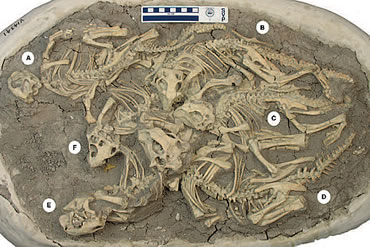
With all these potential shortcomings in young hadrosaurs being effective enough at feeding to sustain themselves, it is probable that lactation may have been used as an alternative method in obtaining the nutrients required for rapid growth and development (proteins), especially of the characteristic dental batteries (lots of calcium needed). This would help to explain why in some hadrosaurs, they grew exceptionally rapidly, being able to go from 300g as a hatchling to a 20kg juvenile within just 8 weeks (so not good as pets, unfortunately), most likely occurring until they were physically capable of chowing down on the local plant matter. Whether this could have occurred within other ornithischian groups is more difficult to answer, as even less is known about their feeding styles, although as most were less-specialised than hadrosaurs, it is likely that if they did, it would be for even longer periods of time until juveniles were capable of harvesting enough forage to sustain themselves. Hypsilophodontids (early-grade ornithopods), such as Oryctodromeus, have been discovered in burrows along with juveniles, suggesting extensive parental care too, raising the possibility that these animals, although lacking any specialised dentition, were lactators.
So a pretty cool speculative hypothesis eh! Unfortunately, we’ll never know whether all dinosaurs ‘lactated’ or not, unless someone invents time travel or Jurassic Park. It certainly seems plausible though that, along with other methods of parental care, adult dinosaurs of all kinds nursed their young with secretions of some sort. Can you think of any other features that dinosaurs might have had that aren’t present in the fossil record, but what we might be able to infer about them from their modern descendants?
Brian Switek (@Laelaps) has written about this too over at his new blog for National Geographic: http://phenomena.nationalgeographic.com/2013/01/17/maiasaura-milk/
*Note, that when referring to the name of a particular clade, or evolutionarily significant grouping, of dinosaurs (e.g., Ornithischia), the first letter is capitalised as with mine or your name, but when referred to informally (e.g., ornithischians), then it is not capitalised. Taxonomists are a fun bunch aren’t they.
I forwarded this to Jerry Coyne’s website-not-a-blog, since it might interest his readers, but here’s my several cents worth :
I’m not enough of a dinosaur anatomist (elsewhere on the Web I uses a signature that “Birds are not dinosaur descendants; birds are dinosaurs, for all useful meanings of “birds”, “are” and “dinosaurs”) to know the anatomical details of the various contrivances used by extant dinosaurs to “lactate”, but I’d be moderately sanguine about the chances of finding anatomical evidence of what would probably need to be fairly substantial excretory glands, whereever they’re situated. Mention of the often fat-rich composition of such “extant dinosaur milk” makes me think that the geochemists might have a fighting chance with that sort of idea. And in my memory I have a circa 1996 (1998 actually) report of a well-preserved theropod dinosaur from Sicily which had a large stain in it’s upper thorax which was interpreted at the time as a possible mark of the heart position, but which might bear re-consideration in the light of this.
… searching.
I name things in my “paper mound” so that you can find the reference by reading the file name :”Nature-392-0383-Exceptional-soft-tissue-preservation-in-a-theropod-dinosaur-from-Italy.PDF” [journal]-[volume]-[page]-[title].[format]
It’s a beast called “Scipionyx”, from southern Italy not Sicily, and it’s got a belly full of organ remains, but in the throat region structures interpreted as “pectoral musculature” and “trachea?”.
So … you don’t need access to the wonderful preservation of the Chinese material.
Mr Green Tea (Jon?) reports a tolerably testable hypothesis.